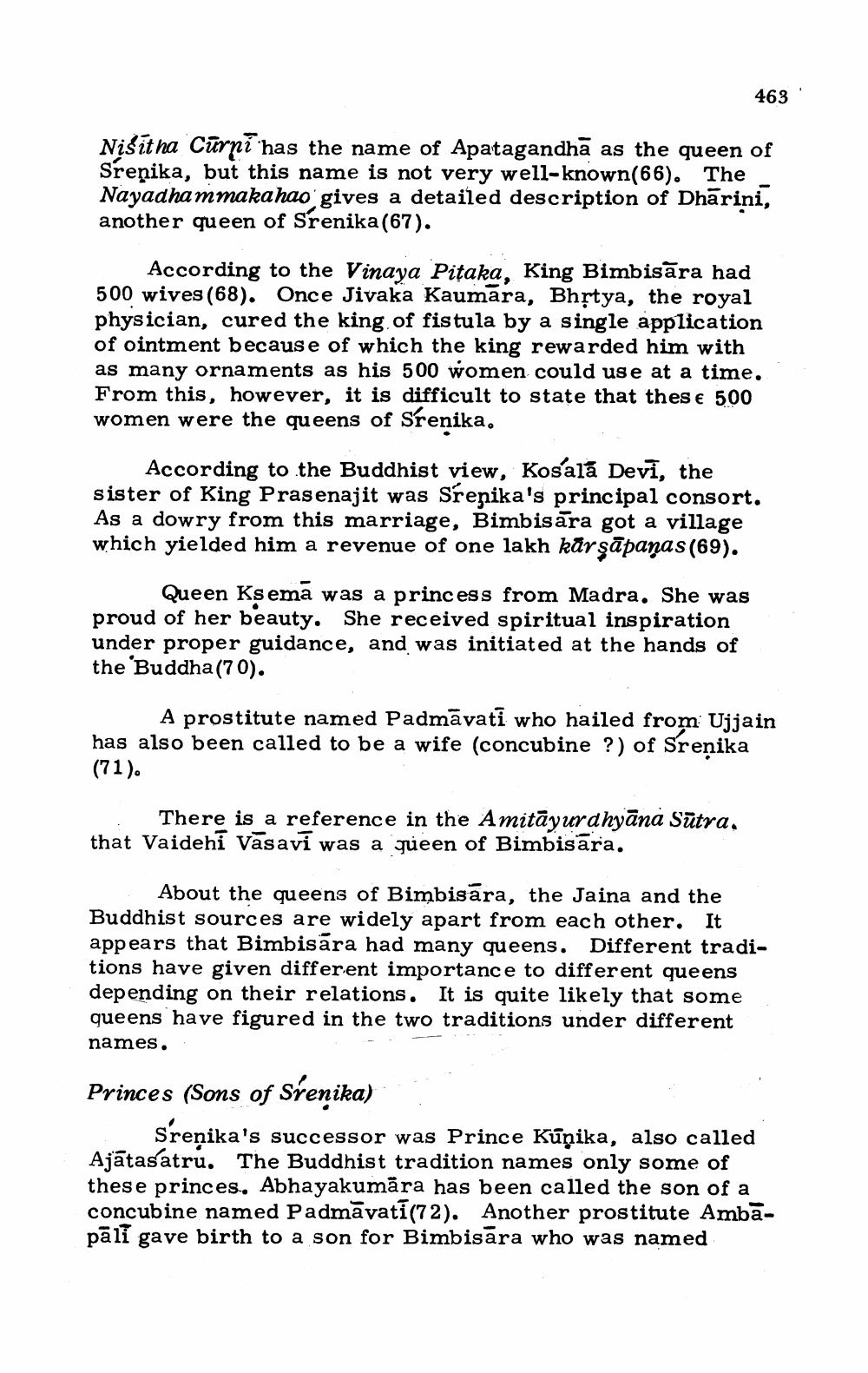________________
463
Nišitha Cūrni has the name of Apatagandhā as the queen of Sreņika, but this name is not very well-known(66). The Nayadhammakahao gives a detailed description of Dhārini, another queen of Srenika(67).
According to the Vinaya Pitaka, King Bimbisāra had 500 wives (68). Once Jivaka Kaumara, Bhrtya, the royal physician, cured the king of fistula by a single application of ointment because of which the king rewarded him with as many ornaments as his 500 women could use at a time. From this, however, it is difficult to state that these 500 women were the queens of Srenika.
According to the Buddhist view, Kos'alá Devi, the sister of King Prasenajit was Srenika's principal consort. As a dowry from this marriage, Bimbisara got a village which yielded him a revenue of one lakh kârşāpaņas(69).
Queen Ksema was a princess from Madra. She was proud of her beauty. She received spiritual inspiration under proper guidance, and was initiated at the hands of the Buddha (70).
A prostitute named Padmāvatī who hailed from Ujjain has also been called to be a wife (concubine ?) of Sreņika (71).
There is a reference in the Amitāyurdhyāna Sūtra. that Vaidehi Vasavi was a queen of Bimbisāra.
About the queens of Bimbisara, the Jaina and the Buddhist sources are widely apart from each other. It appears that Bimbisara had many queens. Different traditions have given different importance to different queens depending on their relations. It is quite likely that some queens have figured in the two traditions under different names.
Princes (Sons of Syenika)
Srenika's successor was Prince Kūņika, also called Ajātasatru. The Buddhist tradition names only some of these princes. Abhayakumāra has been called the son of a concubine named Padmavati(72). Another prostitute Ambapāli gave birth to a son for Bimbisara who was named




